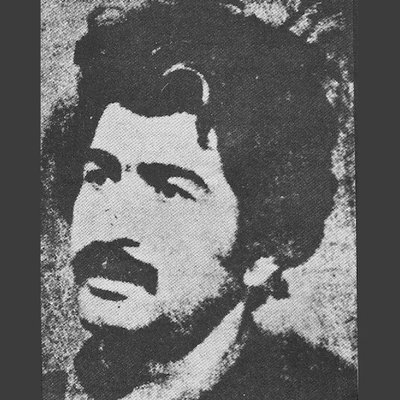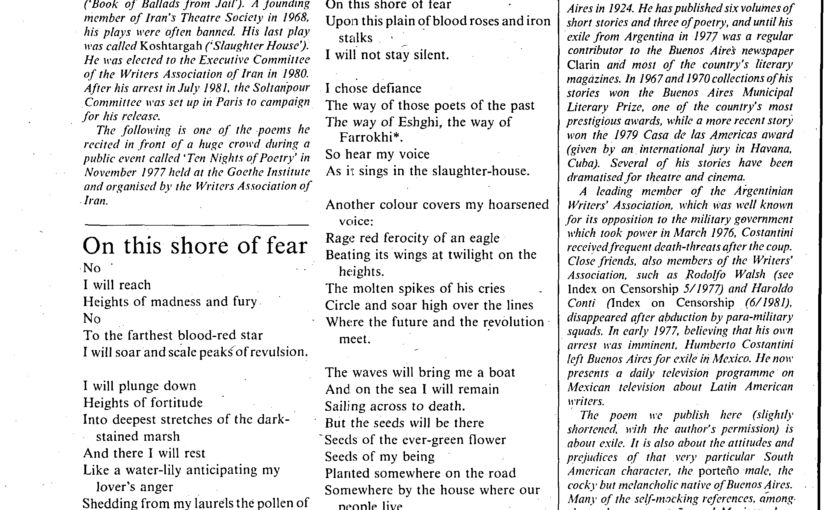Certain leftist factions have adopted the adage «the enemy of my enemy is my friend,» even when it leads them to align with groups like Hamas or Hezbollah—organizations whose principles sharply contradict the left’s professed commitment to secularism and gender equality. The relationship between leftists and Islamist movements is rooted in a complex interplay of historical events and ideological shifts.
The Iranian Revolution exemplifies how such alliances can emerge despite profound ideological divides. Many leftist groups, including the Tudeh Party and the Mujahedin-e Khalq (MEK), initially backed Ayatollah Khomeini due to their shared opposition to the Shah’s regime [1] [2]. They saw his anti-imperialist stance as compatible with their resistance to Western, particularly U.S., influence [8] [2]. This alignment reflected a broader communist strategy of partnering with anti-imperialist movements in the developing world. The Tudeh Party, shaped by its pro-Soviet orientation since the 1946 Iran crisis, prioritized Moscow’s interests, a stance that later eroded its credibility among Iranians [8] [10].
Founded in 1941, the Tudeh Party became a Soviet-aligned force after 1946, often at the expense of Iranian sovereignty [8]. Meanwhile, the MEK began as an Islamist group blending revolutionary Marxism with Shia Islam, influenced by Ali Shariati’s writings. Taqi Shahram, a key MEK leader from 1972 to 1975, drove its shift to Marxism by spring 1975, purging its Islamist elements. When Majid Sharif-Vaghefi resisted this change, Shahram orchestrated his murder—Sharif-Vaghefi’s body was burned and abandoned outside the city [36].
The Shah, Mohammad Reza Pahlavi, rose to power through U.S. and British intervention. In 1953, Operation Ajax—a CIA and SIS-led coup—overthrew Iran’s elected Prime Minister, Mohammad Mosaddegh, to safeguard Western oil interests and counter perceived communist threats [27] [28]. This cemented the Shah’s rule as a pro-Western monarch for 26 years [27] [31]. Post-coup, the U.S. bolstered his regime with economic aid, military support, and CIA training for SAVAK, his feared secret police [27]. By 1972, Nixon allowed the Shah to purchase advanced U.S. weaponry (excluding nuclear arms) to secure regional interests [27]. After the 1973 oil price surge, Iran’s wealth funded massive arms deals [27] [29]. U.S. policy grew so reliant on the Shah that questioning the alliance became taboo, blinding Washington to rising dissent [27] [29].
The Green Belt Theory, a Cold War strategy, further shaped U.S. policy by promoting Islamic states around the Soviet Union to curb its influence [32]. Zbigniew Brzezinski, Carter’s National Security Adviser, was a key architect [33]. This U.S.-Shah partnership fueled anti-American sentiment, paving the way for the 1979 Revolution [30].
Leftists interpreted Khomeini’s attacks on the «Big Satan» (U.S.) and «Small Satan» (Europe) as anti-imperialist, aligning with their worldview [8]. Marxist and religious factions united in protests to topple the Shah, despite their differences, with leftists seeing Khomeini as a stepping stone to socialism [9] [13]. This proved a grave misjudgment. Within a year, political freedoms eroded as Khomeini consolidated an Islamic state, turning on his leftist allies [10]. The provisional government under Mehdi Bazargan collapsed on November 5, 1979, after Khomeini’s followers seized the U.S. embassy, sparking the hostage crisis that sank Carter’s 1980 re-election [6] [7].
Khomeini’s regime swiftly marginalized leftists, executing or jailing many and dismantling their organizations [10] [11]. The Tudeh Party, tainted by its Soviet ties and perceived foreign allegiance, struggled for public support [12]. Banned in 1982, it faced mass purges, with thousands killed or tortured [8] [9] [15]. The MEK fared no better—between June 1981 and April 1982, around 3,500 members were killed by the Revolutionary Guard [5]. Shahram, arrested in 1980, was executed for «uprising against Muslim combatants.»

Saeed Soltanpour, a leftist poet and playwright, initially backed the revolution but was executed in 1981 [37]. A member of the Marxist Fedai Guerrillas, he used street theater to critique social inequities, drawing thousands [38] [39]. Arrested during his wedding, he refused to recant and was killed [37] [40]. His works were later banned [37].
The 1980s, especially 1980–1988, marked Iran’s bloodiest modern era. The 1988 mass executions, ordered by Khomeini via fatwa, killed between 2,800 and 30,000, mostly MEK and leftist dissidents [3] [14]. «Death Commissions» interrogated prisoners on their beliefs, executing those who refused to renounce their views [16] [19]. Bodies were dumped in mass graves, families left uninformed [26]. Ayatollah Montazeri’s 2016 audio leak exposed the scale of this «greatest crime,» implicating figures like Ebrahim Raisi [22] [3].
Despite this history, some leftists today still back Islamist groups like Hamas and Hezbollah, framing them as anti-imperialist allies. This raises stark questions: how can advocates of secularism and equality reconcile with movements that suppress women, enforce gender norms, and wield violence to impose ideology?
On this shore of fear
No
I will reach
Heights of madness and fury
No
To the farthest blood-red star
I will soar and scale peaks of revulsion.
I will plunge down
Heights of fortitude
Into deepest stretches of the dark-
stained marsh
And there I will rest
Like a water-lily anticipating my
lover’s anger
Shedding from my laurels the pollen of
mutiny
Upon the dead water.
Consider the plain:
Menacing waters
Feeding on our love-drenched blood.
Black are the sails
Burnt out crucifixes for these graves of
the sea.
Observe the martyrs riding westward
Hear the soreness of their blood-torn
voices
Remember in the confusion
The fishers’ seasoned nets
Catching corpses
From these muddy waters.
In the fallow ground of this silence
On this shore of fear
Upon this plain of blood roses and iron
stalks
I will not stay silent.
I chose defiance
The way of those poets of the past
The way of Eshghi, the way of
Farrokhi*.
So hear my voice
As it sings in the slaughter-house.
Another colour covers my hoarsened
voice:
Rage red ferocity of an eagle
Beating its wings at twilight on the
heights.
The molten spikes of his cries
Circle and soar high over the lines
Where the future and the revolution
meet.
The waves will bring me a boat
And on the sea I will remain
Sailing across to death.
But the seeds will be there
Seeds of the ever-green flower
Seeds of my being
Planted somewhere on the road
Somewhere by the house where our
people live
In the feverish garden of the tulips.
After the dry spring of a defeated
nation
Sow the field with mingled seeds
Hide them by the furnace
Scatter them on the land
And watch them grow in silence
Into the future rising.
Saeed Soltanpour, adapted and translated by Patrick Cross
- Eshghi and Farrokhi, two of Iran’s leading poets, also died in the struggle
for freedom.
[1] https://omerjournal.com/2022/05/17/two-interpretations-of-religion-the-tudeh-party-and-irans-1979-constitution/
[2] https://www.hbs.edu/faculty/Pages/item.aspx?num=52375
[3] https://en.wikipedia.org/wiki/1988_executions_of_Iranian_political_prisoners
[5] https://en.wikipedia.org/wiki/People’s_Mojahedin_Organization_of_Iran
[6] https://www.britannica.com/event/United-States-presidential-election-of-1980
[7] https://millercenter.org/illumination/reconsidering-jimmy-carters-legacy
[8] https://en.wikipedia.org/wiki/Tudeh_Party_of_Iran
[9] https://www.brookings.edu/articles/how-bad-judgement-calls-brought-a-chain-of-blunders-soviet-responses-to-the-iranian-revolution/
[10] https://merip.org/1980/03/the-tudeh-party-in-iranian-politics/
[11] https://crescent.icit-digital.org/articles/why-leftist-dogmas-failed-during-the-islamic-revolution-in-iran
[12] https://www.hbs.edu/faculty/Pages/item.aspx?num=52375
[13] https://jacobin.com/2022/10/chahla-chafiq-iranian-left-khomeini-protests-feminism
[14] https://www.queermajority.com/essays-all/by-any-means-necessary
[15] https://www.tudehpartyiran.org/en/1993/03/31/brief-history-of-the-tudeh-party-of-iran/
[16] https://iran1988.org/1988-massacre/
[19] https://www.amnesty.org/en/latest/campaigns/2018/10/blood-soaked-secrets/
[22] https://www.britannica.com/biography/Hossein-Ali-Montazeri
[26] https://www.atlanticcouncil.org/event/bloody-fatwa-irans-new-president-and-the-1988-prison-massacre/
[27] https://theworld.org/stories/2014/01/15/us-and-iran-part-ii-shah-and-revolution
[28] https://www.pbs.org/wgbh/americanexperience/features/taken-hostage-presidents-shah-strategic-partnership/
[29] https://nationalinterest.org/commentary/how-the-shah-entangled-america-8821
[30] https://www.brookings.edu/articles/1979-iran-and-america/
[31] https://en.wikipedia.org/wiki/CIA_activities_in_Iran
[32] https://en.wikipedia.org/wiki/Green_Belt_Theory
[33] https://en.wikipedia.org/wiki/Carter_Doctrine
[36] https://en.wikipedia.org/wiki/Majid_Sharif-Vaghefi
[37] https://www.journalismisnotacrime.com/en/wall/saeedsoltanpour/
[38] https://trafo.hypotheses.org/23713
[39] https://siah-kal.com/english/RSaeed-Soltanpour-Poems.pdf
[40] https://field-journal.com/issue-21/freedom-of-action-a-brief-illumination-on-the-nature-of-artistic-activism-through-performing-arts-in-modern-iran/
